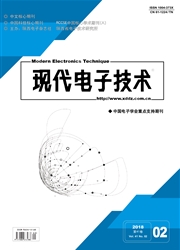

 中文摘要:
中文摘要:
明安图射电频谱日像仪(Mingantu Ultrawide Sp Ectral Radioheliograph,MUSER)是新一代具有高时间、高空间、高频率分辨率的太阳专用射电望远镜,采用综合孔径原理成像,所以幅度和相位是决定最后成图质量的关键因素。天线的相位方向图会影响日像仪输出的幅度和相位,根据日像仪的馈源设计和综合孔径原理,针对明安图射电频谱日像仪天线数目多,且为户外环境,根据天文观测须经常测试天线性能的特点,给出了基于相关结果测量日像仪天线相位方向图的方法,该方法可以直接通过日像仪的相关输出结果高效准确地得到天线的相位方向图。对MUSER-I天线的相位方向图进行了测量和分析,同时分析了天线相位方向图对日像仪成像的影响,为得到高质量的太阳图像提供了参考和保障。
 英文摘要:
英文摘要:
The MUSER( Mingantu Ultrawide Sp Ectral Radioheliograph) is a new generation of solar dedicated radio telescope for imaging the Sun at high time,high spatial and high frequency resolutions simultaneously. It is an aperture- synthesis telescope,so the amplitude and phase are the key factors in the final imaging. The phase pattern is an important factor affecting the array 's amplitude and phase. In this paper,allowing for the techniques of MUSER,the method by measuring correlation is adopted to measure phase pattern of feeds for MUSER based on aperture synthesis principle. Since MUSER has numbers of antennas and located in harsh environments and according to the demand of astronomical observations,the performance of the antennas should be measured frequently. This method simplifies the process of phase pattern measurement of the interferometric array and it can obtain accurate results efficiently. The measuring process and analysis of MUSER- I are presented in detail in this paper. In addition,to support future scientific observation,the phase pattern's effect on the image is further studied.
 同期刊论文项目
同期刊论文项目
 同项目期刊论文
同项目期刊论文
 期刊信息
期刊信息
